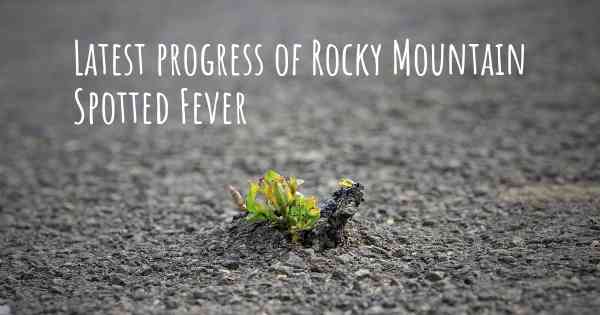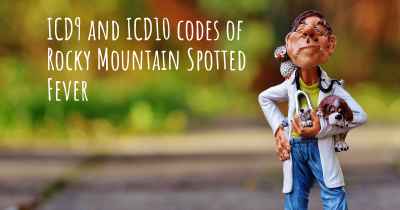What are the latest advances in Rocky Mountain Spotted Fever?
Here you can see the latest advances and discoveries made regarding Rocky Mountain Spotted Fever.

Rocky Mountain Spotted Fever (RMSF) is a tick-borne disease caused by the bacterium Rickettsia rickettsii. It is primarily found in North, Central, and South America, with the highest incidence occurring in the Rocky Mountain region of the United States. RMSF can be a severe and potentially fatal illness if not promptly diagnosed and treated. Over the years, there have been significant advances in the understanding, diagnosis, and treatment of this disease.
Improved Diagnostic Techniques: Early and accurate diagnosis of RMSF is crucial for effective treatment. Traditionally, diagnosis relied on clinical symptoms and serological tests, which detect antibodies against Rickettsia. However, these tests may not be reliable in the early stages of the disease. Recent advances in diagnostic techniques have led to the development of molecular tests, such as polymerase chain reaction (PCR), which can detect the presence of Rickettsia DNA in patient samples. PCR has shown promising results in improving early diagnosis and reducing the time to initiate appropriate treatment.
Advancements in Treatment: Prompt treatment with appropriate antibiotics is essential to prevent severe complications of RMSF. Tetracyclines, such as doxycycline, are the drugs of choice for treating RMSF. However, there have been concerns about their use in certain populations, such as pregnant women and children. Recent studies have provided evidence supporting the safety and efficacy of doxycycline in these populations, challenging previous misconceptions. This has led to updated treatment guidelines, ensuring that all patients, regardless of age or pregnancy status, receive the most effective treatment.
Public Awareness and Education: Increasing public awareness about RMSF and its prevention is crucial in reducing the incidence of the disease. Efforts have been made to educate healthcare providers, communities, and individuals about the signs and symptoms of RMSF, the importance of tick bite prevention, and early diagnosis. This includes educational campaigns, distribution of informational materials, and online resources. By improving knowledge and awareness, individuals can take preventive measures and seek timely medical attention, leading to better outcomes.
Tick Control Strategies: Preventing tick bites is the most effective way to reduce the risk of RMSF. Advances in tick control strategies have focused on both environmental and personal approaches. Environmental strategies involve the use of acaricides, which are chemicals that kill ticks, in high-risk areas. Personal prevention measures include wearing protective clothing, using insect repellents, and conducting regular tick checks. Additionally, research is ongoing to develop vaccines against tick-borne diseases, including RMSF, which could provide long-term protection against infection.
Genomic Studies: Genomic studies have provided valuable insights into the biology and evolution of Rickettsia rickettsii, the causative agent of RMSF. By sequencing the genome of the bacterium, scientists have identified potential virulence factors and drug targets. This knowledge can aid in the development of new diagnostic tools, therapeutics, and preventive strategies. Furthermore, genomic studies have helped in understanding the genetic diversity of Rickettsia strains, which can assist in tracking the spread of the disease and identifying potential reservoirs.
In conclusion, significant progress has been made in various aspects of Rocky Mountain Spotted Fever. Improved diagnostic techniques, advancements in treatment, public awareness and education, tick control strategies, and genomic studies have all contributed to better understanding and management of this tick-borne disease. Continued research and collaboration among scientists, healthcare professionals, and public health agencies are essential to further advance our knowledge and combat RMSF effectively.








